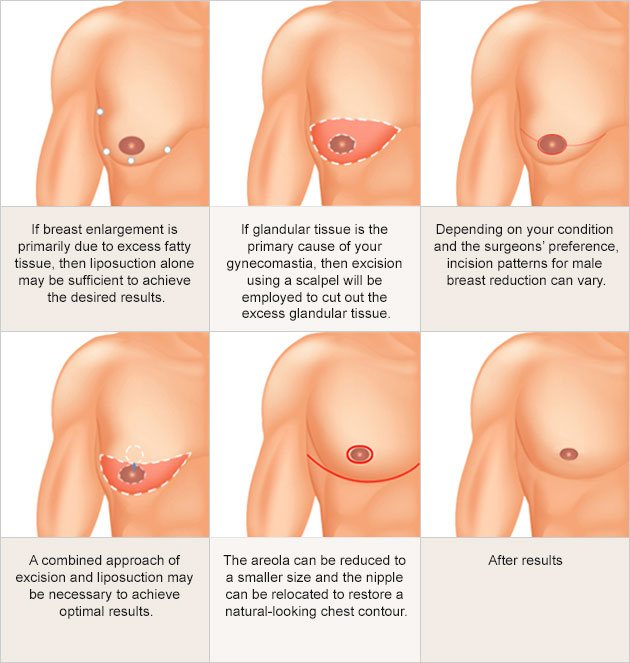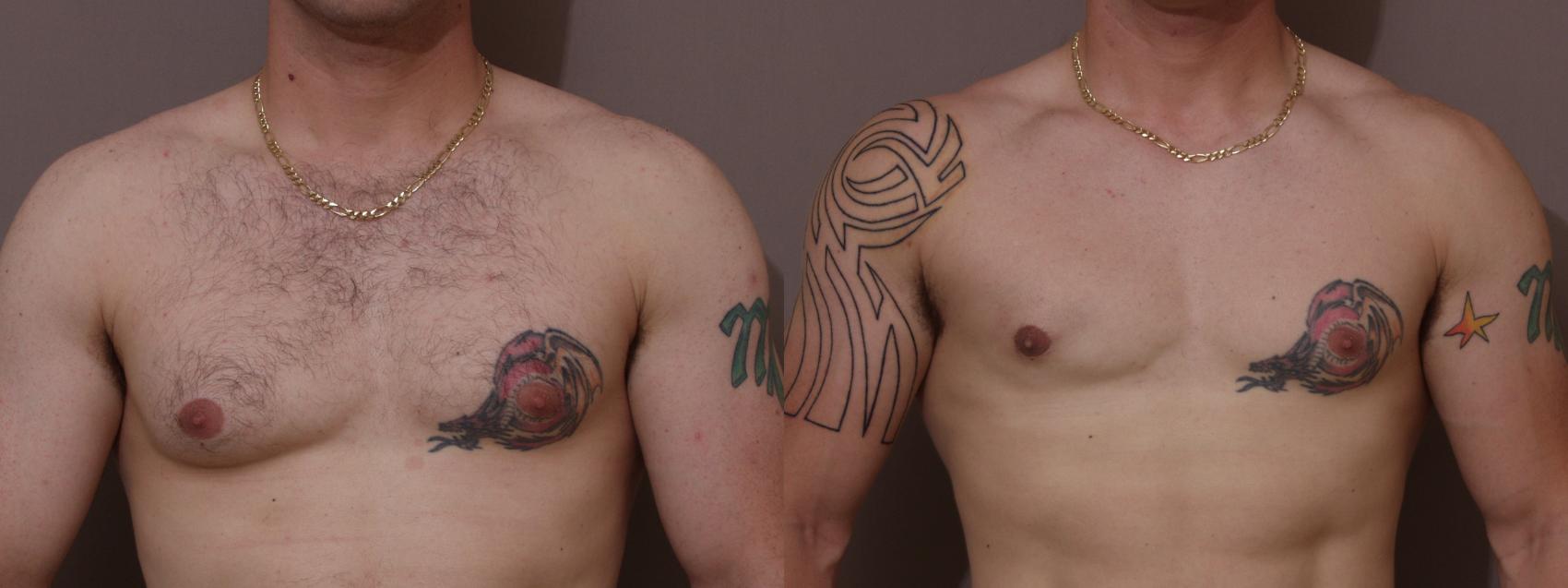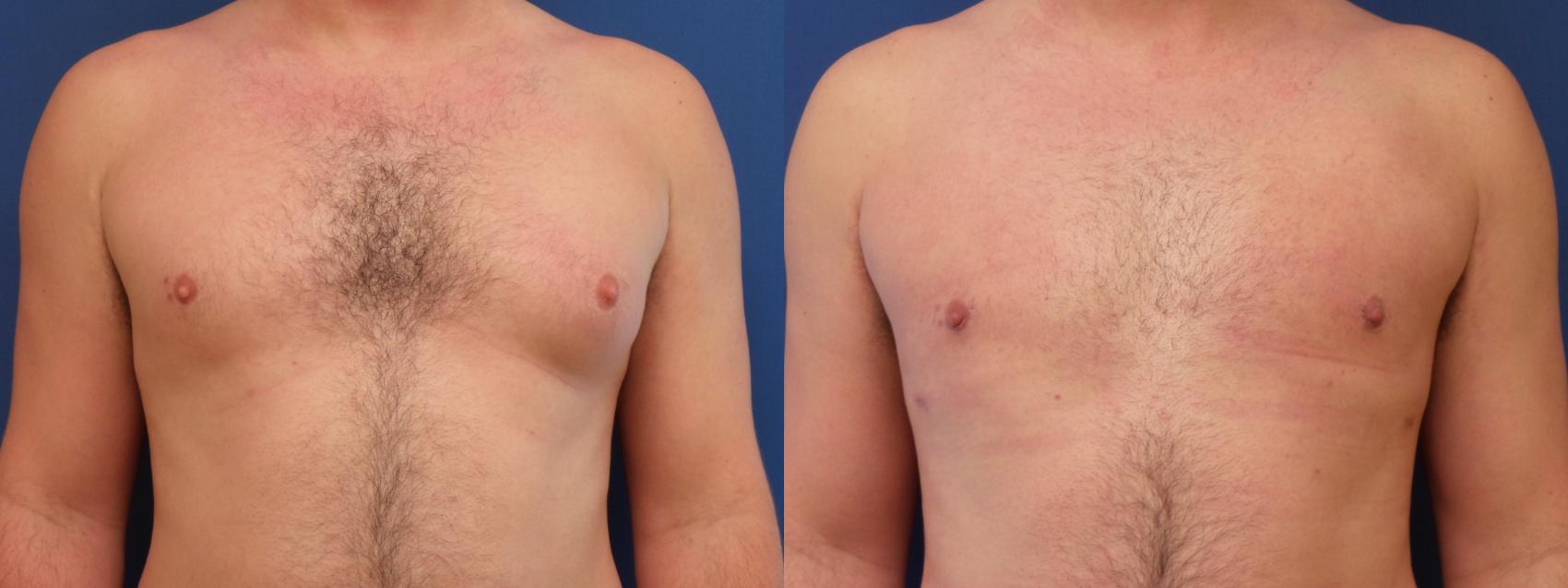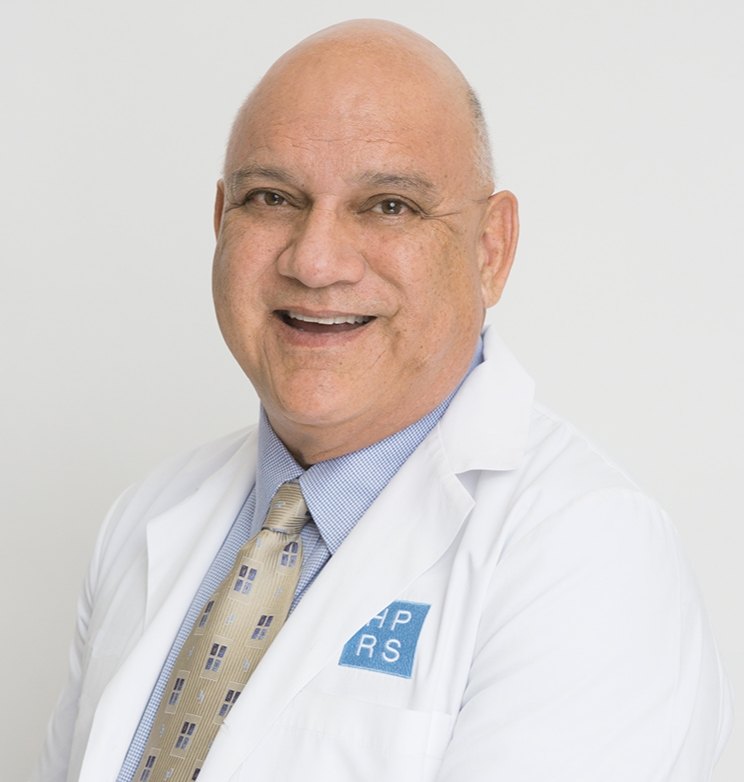
Clear Lake
Houston Plastic and Reconstructive Surgery
575 East Medical Center Boulevard
Webster, TX 77598
Phone: (281) 282-9555
Monday–Friday: 8 a.m.–5 p.m.
Med Center/Museum District
Houston Plastic and Reconstructive Surgery
1801 Binz Street #300
Houston, TX 77004
Phone: (713) 521-4777
Monday–Thursday: 8 a.m.–5 p.m.
Gynecomastia Treatment (Male Breast Reduction)
Breast reduction surgery is widely known as a solution for women burdened by large breasts. However, it may surprise you to learn that an increasing number of men are electing to undergo breast reduction, as well. In recent years, male breast reduction has become a procedure more frequently requested of our plastic surgeons, as many men suffer from oversized male breasts. While others might jokingly call them “man boobs,” this condition is often caused by gynecomastia. At Houston Plastic and Reconstructive Surgery, we understand your concerns. If you’re enduring the embarrassment and frustration that often comes with this condition, male breast reduction at our Houston and Webster, TX, practice may provide a dramatic improvement to your body as well as your self-esteem.
The first step in your journey to getting a more masculine chest is requesting a consultation with our HPRS surgeons. Patients concerned about gynecomastia come to our Webster and Houston locations for consultations. Use the online form, or give us a call at (281) 282-9555 to schedule an appointment. You can also learn more about each of our locations.
What Is Gynecomastia?
As many as 70% of adolescent boys develop gynecomastia because of normal hormonal changes that occur during early and mid-puberty. Gynecomastia, or male breast enlargement, can be the source of embarrassment and low self-esteem for teenage boys and young men. The condition is also common among middle-aged and elderly men, with up to 65% of men in this population developing gynecomastia at some point in life.
Can Gynecomastia Go Away on Its Own?
For adolescents who develop gynecomastia due to hormonal imbalances that occur during puberty, it’s unlikely for the condition to persist beyond 2 years. In some cases, it resolves within 6 months or so. But for boys whose breasts remain enlarged beyond age 17, the chances of gynecomastia going away on its own are low. Gynecomastia is linked to taking certain medications, including anabolic steroids. Some research also indicates that smoking marijuana can lead to enlarged male breast tissue.
Meet Our Plastic Surgeons
Each plastic surgeon on our team has the training, experience, and talent needed to provide the natural-looking results patients want while ensuring their safety and comfort.
Request Your ConsultationAre You a Good Candidate for Male Breast Reduction Surgery?
For teenagers and men whose breast enlargement persists, male breast reduction may be the best approach for treating gynecomastia. The best candidates for a male breast reduction procedure are in good overall health and at a stable weight they can comfortably maintain. Other characteristics of good candidates for gynecomastia treatment:
- Unhappy with the appearance of the chest
- Have already spoken with your primary care doctor about nonsurgical treatments
- A nonsmoker who does not use drugs
- Stable chest size
Not all males with overly developed breasts have gynecomastia. A condition called pseudogynecomastia can resemble male breast enlargement when an individual gains excessive weight.

Your Male Breast Reduction Procedure
Our surgeons, who specialize in treating gynecomastia, create a surgical plan to address your specific condition following an extensive consultation. The consultation will include both a physical exam and a discussion of your concerns and aesthetic goals for the procedure. All patients are screened with laboratory blood tests to rule out medical causes of gynecomastia. The specific nature of your surgery depends on the cause of gynecomastia. A local anesthetic with sedation is often used during the procedure, but general anesthesia may be more appropriate in certain cases.
Male breast reduction surgery typically involves liposuction techniques, as well, if the primary reason for the breast enlargement is excessive fatty tissue. During liposuction, the surgeon makes several very small incisions and then inserts a thin, hollow tube — called a cannula — through the incisions. The cannula then breaks up the fat and suction it from the body.
For patients whose enlarged breasts developed because of excess glandular tissue (as opposed to fat), our surgeons may perform excision surgery to remove the tissue. This procedure involves making an incision at the edge of the areola (the darker skin surrounding the nipple). It can be performed alone or combined with liposuction for the best possible results. Our surgeons may also reduce the size of the nipple and reposition it to create a more masculine look for your chest.
Male Breast Reduction Recovery
Recovery following any surgical procedure varies from patient to patient, but following the postoperative instructions is important. This will help minimize your discomfort and enhance the healing process.
Male Breast Reduction Recovery Timeline
Week 1: Expect some swelling and bruising immediately after the procedure. It can take as little as a few weeks to resolve fully, but some residual swelling may persist beyond that time frame. You can return to a non-physical job by the end of the week. If your job requires any heavy lifting, you may need to take 2 to 3 weeks off. Even though our surgeons make incisions as small and inconspicuous as possible, it’s important to protect your incision from the sun to minimize scars.
Week 2: By the end of week 2, you will feel like yourself, and you can resume all your normal activities. Avoid vigorous exercise. After a discussion with your surgeon, you can start sleeping on your side.
Weeks 3 to 4: Most swelling will subside by week 4. After 4 weeks, you can stop wearing a compression garment. Patients should wait about 2 to 3 weeks before resuming light exercise, beginning with a focus on the lower body. After a month or so, you can gradually start performing chest exercises to build up muscle strength. It’s important to listen to your body and not try to do too much too soon.
You should be fully recovered 6 weeks after your surgery, but the final results of your procedure may not be completely apparent for 2 or 3 months.
Frequently Asked Questions
Is gynecomastia surgery permanent?
During male breast reduction surgery, a surgeon may remove excess skin and fat. The changes to the chest’s contours are permanent. If you maintain a healthy lifestyle that includes regular exercise and a nutritious diet, the changes will be long-lasting.
Are there different stages of gynecomastia?
Yes, there are 4 different stages, or grades, of gynecomastia. These include:
• Stage 1: There is slight breast tissue enlargement that might not be visible under clothes but could be palpable.
• Stage 2: This stage is characterized by moderate enlargement, and some excess skin may be evident. The changes become more noticeable, potentially affecting self-esteem.
• Stage 3: With increased enlargement, the excess skin becomes more obvious. The emotional and psychological impacts can be significant.
• Stage 4: This is the most advanced stage, featuring significant enlargement and skin laxity. Surgery may be needed for physical comfort and aesthetic reasons.
What’s the best age for gynecomastia surgery?
There isn’t a “best” age to undergo gynecomastia surgery. Adolescent boys with enlarged breasts should wait before getting surgery because the condition often resolves on its own. Adult men at any age who feel self-conscious about the appearance of their chests can get male breast reduction surgery if they’re in good overall health.
How risky is male breast reduction?
As with any elective surgery, male breast reduction does have some risk of complications, such as infection. However, the procedure is considered safe when performed by a board-certified plastic surgeon.
How painful is gynecomastia surgery?
The surgery itself is performed using either a local anesthetic with sedation or general anesthesia, so you shouldn’t experience any discomfort. You can manage pain during recovery with prescription or over-the-counter medications.
Payment Options
We’ll work with you to make your aesthetic dreams come true. We offer flexible financing plans to meet most budgets.
Learn More








